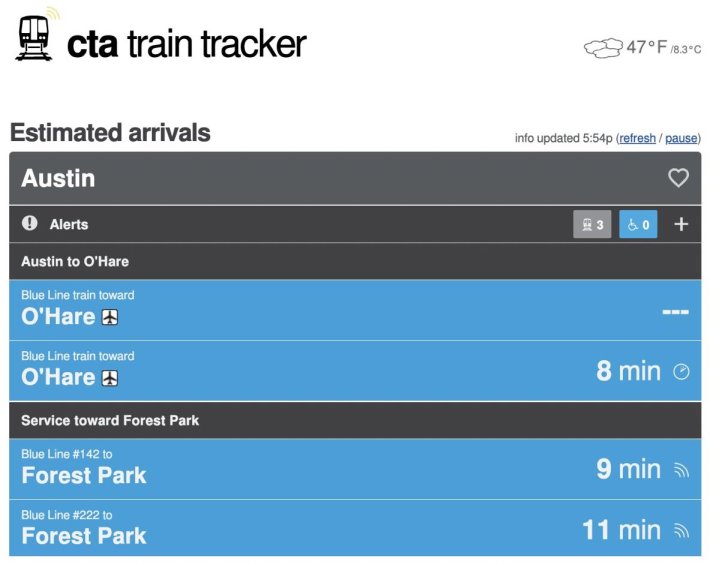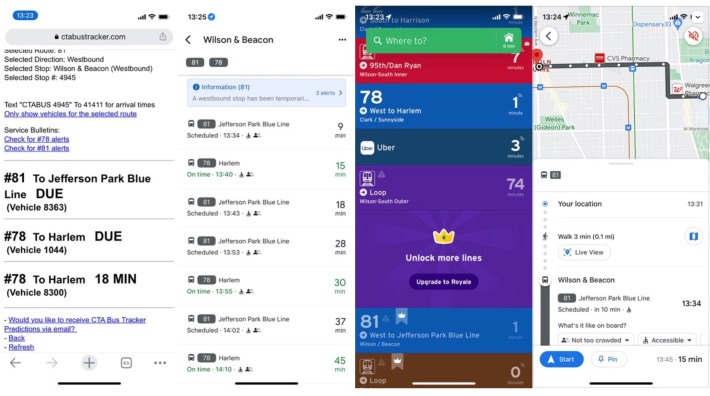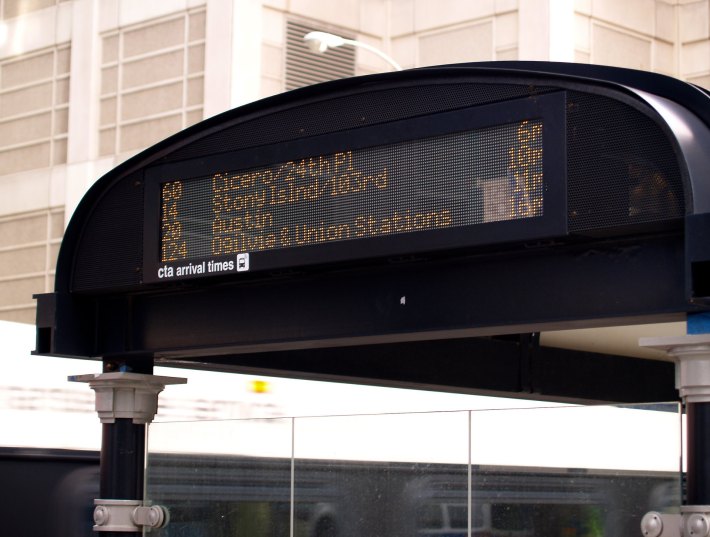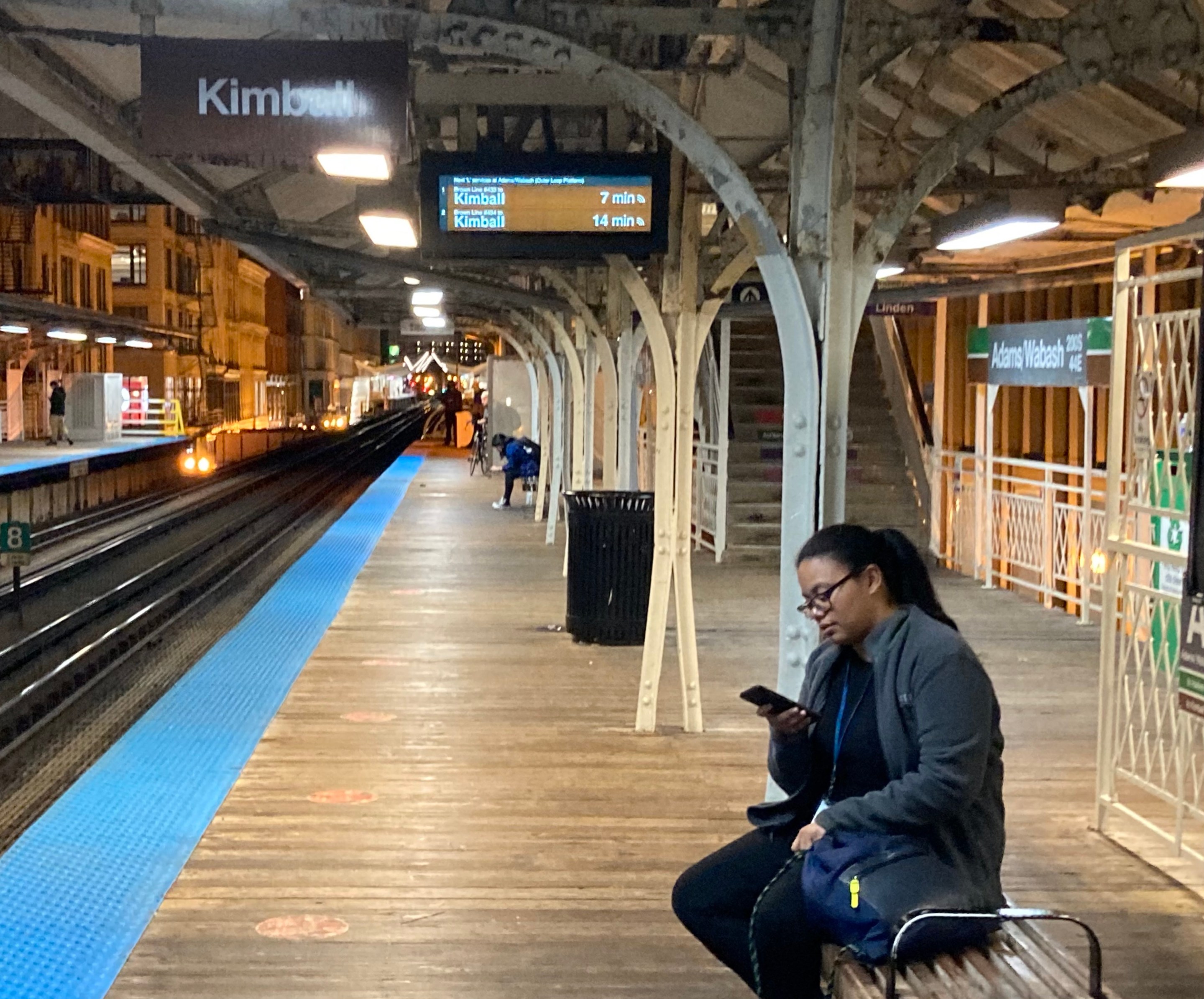Nowadays along with unreliable CTA service and long gaps between bus and train runs due to staffing shortages, "ghost runs" are a major headache for transit riders. That's the infuriating phenomenon of the Transit Tracker, displays, and apps telling you that a bus or train should be approaching soon, only to have that run disappear from the screen before it shows up because there was no one available to staff it.
To some extent you can avoid frustration if you happen to know that a Wi-Fi wave icon next to an arrival time means it's based on real-time data, so that bus or train is actually on the street or tracks. However, a clock icon means that the arrival time is merely based on when a run is scheduled to show up at a stop or station.
And, despite the CTA's best efforts to retain and recruit bus drivers and train operators, it's still very common for runs to go unstaffed. For example data analyst Fabio Göttlicher and his advocacy group Commuters Take Action has been keeping track of just how common it is for Blue Line runs to be skipped.
Yesterday, the blue line had only run 44% of its scheduled trains. Riders deserve more accurate schedules.
— Commuters Take Action (@ctaaction) October 10, 2022
So if you know the wave / clock icon dichotomy, it helps you keep more realistic expectations about whether a run will actually materialize. But most CTA riders aren't aware of that hack. And the situation begs the question, why is the CTA showing runs that are merely scheduled on the trackers at all, when there's often something like a heads-or-tails chance they won't show up? I've suspected that it's because the transit agency doesn't want to admit just how big the gaps between runs often are these days.
However CTA staff have assured me that's not the case, and there are legitimate reasons why the trackers use a mix of real-time and scheduled trip data. I was invited to talk with a few of them last week to get more info about the method behind the ghost run madness. The discussion was "on background," which means they asked that I not mention the staffers' names or run direct quotes. I still didn't leave the Zoom convinced that the agency's Transit Tracker approach makes that much sense, but I did learn some interesting factoids.

The CTA is planning to make the real-time / scheduled breakdown on tracker screens more obvious in the near future by replacing the non-intuitive clock icon with the word "SCHED." That's good, but I'd also suggest they replace the not-at-all-obvious waves icon with "REAL."
One thing I didn't previously know is that ghost buses aren't really a thing if you're looking at arrival times on the Bus Tracker website (there are no official CTA Transit Tracker smartphone apps), or on the LED displays on bus shelters, or if you text the number printed on your bus stop sign. They only show real-time data, so if you're using those methods you can be reasonably confident a bus will show up roughly when it's supposed to. (A couple exceptions to that rule are when a bus has to detour off its route due to an emergency like a fire or a flooded intersection, or if one bus driver is supposed to be relieved by a second one, but that person does show up on time to make the switch.)

But ghost buses and trains are a thing if you're looking the Train Tracker website; an arrival screen in an 'L' station; the CTA's Ventra app; or third-party tools like the Transit app, Google Maps, and Apple Maps. That's because these use a mix of real-time and scheduled data. So why not switch to only using real-time data for these as well?
The CTA staffers gave me a few reasons why this isn't done. If mapping apps didn't have access to the scheduled arrival times, it would be difficult for them to help you plan your trip in advance. That makes sense.
Also, the employees said, if you're at a terminal station like 95th Red or Kimball Brown, there would be nothing on the schedule to tell you how soon a train will (theoretically) be departing until it's almost ready to leave. OK, but how useful is that advance notice if there's sometimes a worse than 50-50 chance that the announced next scheduled run won't materialize?
The staffers said it's also easier to provide advance notice of when a bus will be arriving at the first stop on a route because drivers log into the GPS system when starting their shifts. There's also some lag time between the time a bus driver leaves their garage and arrives at the beginning of the route, giving up to 30 minutes of advanced warning to the Bus Tracker that a run is actually staffed.

The employees added that the Bus Tracker and Train Tracker systems were developed independently of each other in the 2000s, launching about 12 years ago. And while buses are tracked via GPS, trains are tracked via "track signal occupancy," using electric signals that are sent from the trains back to the tracks. They said that's partly because GPS doesn't work in the subway tunnels.
The staffers promised that help is on the way in the form of a new CTA published schedule that will better match current vehicle operator workforce levels. And they argued that the ultimate solution to the ghost run problem is getting the roster of bus and train operators back up to full strength again.
However, even after talking with the CTA employees, it still seems to me that the current situation would be less confusing and frustrating for everyday transit riders if the Train Tracker website and station displays only provided real-time data, just like the Bus Tracker site and shelter displays. Again, just how useful is a screen that tells you, in effect, "It's entirely possible that a train will arrive here in 17 minutes, but then again maybe it won't"?





